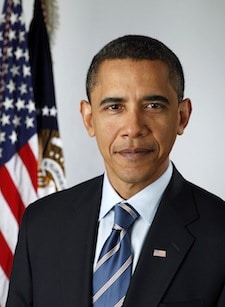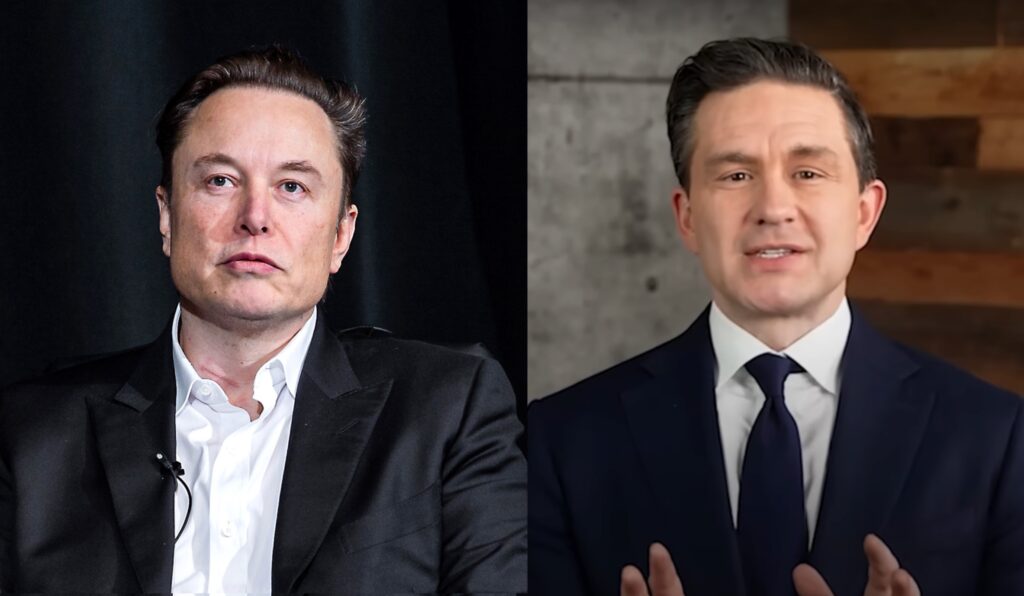Part 3 in a series, see Part 1 and Part 2.
Perhaps more than any other sitting U.S. President, Barack Obama has been Commander in Chief through some of the most obvious examples of what climate change will do to America. The last few weeks alone have given us severe droughts in some areas of the country while others have seen unprecedented flooding; The state of Colorado is battling some of the worst wildfires in their history; and massive heat waves are engulfing large swaths of America. And let’s not forget the massive snowstorms in the winter of 2010 – 2011.
Then there were the manmade environmental atrocities like the BP oil geyser in the Gulf of Mexico, the deadly Massey Upper Big Branch mine disaster, the Kalamazoo River tar sands spill, fracking-induced earthquakes in Ohio, water contamination from unconventional oil and gas drilling – the list could go on and on.
So in the face of these disasters, how has President Obama fared on environmental issues? Let’s take a look.
In 2008, then-candidate Obama told supporters that if elected, he would set a goal of an 80% reduction in carbon emissions by the year 2050. He acknowledged that man-made climate change was a real threat to America, and signaled a change in policy from the previous administration. Voters, especially environmentally conscious voters, were relieved to finally hear a candidate expressing such bold goals for the country.
After all, the previous eight years of the Bush Administration gave us zero initiatives, laws, or policies that were designed to address any issues relating to climate change. Instead, we were privy to enormous tax giveaways to oil companies, as well as plans that would have handed over protected public lands to the dirty energy industry to exploit. Candidate Obama’s promises were music to the ears of those who are concerned about the direction our planet is heading.
The president-elect proudly proclaimed: “When I am president, any governor who’s willing to promote clean energy will have a partner in the White House. Any company that’s willing to invest in clean energy will have an ally in Washington. And any nation that’s willing to join the cause of combating climate change will have an ally in the United States of America.”
He also told supporters: “Few challenges facing America – and the world – are more urgent than combating climate change. Many of you are working to confront this challenge….but too often, Washington has failed to show the same kind of leadership. That will change when I take office.”
But even before he was sworn into office, naysayers within the Republican Party began to deride the president-elect’s goals, telling their followers that these plans would come at too great a cost to our economy. Obama countered these claims by telling the country that his plans would reduce our oil imports, put Americans back to work in the green energy field, and help reduce the catastrophic effects of climate change. He understood, and made it clear to the country, that the issue couldn’t wait – we had to act now on climate change to protect our country.
And all of this was before the president was even sworn into office. The soon-to-be Commander In Chief had no idea what kind of battles and atrocities he would face after taking that oath of office.
Much like his 2012 opponent Mitt Romney (see Part 2), Obama set a bold and ambitious agenda on environmental issues, and got off to a great start when he took office. And, again like Romney, he has since backed off many of his promises and goals. The difference between Romney and Obama is that Romney changed positions and disowned his previous accomplishments in an attempt to win support from those who opposed his initiatives.
But that’s not to say that Obama hasn’t been successful in the environmental arena. He accomplished more in the first two years of his administration for the environment than the George W. Bush administration accomplished in eight years.
In his first two years in office, according to Slate, the Obama administration presided over a decline in both carbon dioxide and methane emissions (a 6.1% decline). The president also approved the nation’s first offshore wind farm, increased fuel economy standards for automobiles, extended tax credits and grants for residential green energy initiatives, and set new standards for sulfur-dioxide and nitrogen-oxide emissions. Slate also says that the Obama Administration saved an estimated 160,000 American lives by refusing to bow to Republican pressure and weaken the Clean Air Act.
Considering the previous eight years of inaction, and the current do-nothing GOP Congress, these were major accomplishments for the administration.
Of course, there were a few misfires during this time as well. The President was hoping to bolster investment in green energy companies by granting federal loans to these companies, but the bankruptcy of loan recipient Solyndra gave the Tea Party Republicans enough ammunition and bogus talking points to effectively put the brakes on the loan programs.
Things were looking great for both the president and the environment until the year 2010, when an oil rig explosion in the Gulf of Mexico and a subsequent power shift in Washington left Obama very little power to move forward with his full pro-environment agenda.
The Gulf of Mexico oil geyser was a turning point for the administration. It was this catastrophic event that brought environmental and energy concerns to the forefront of his administration, and the public finally began to pay attention to what the president was actually doing behind the scenes. On the surface, we had heard him speak about the need to reduce our emissions, clean up our environment, and hold the dirty energy industry accountable for their destruction. But when the public and the press started digging deeper after the Deepwater Horizon oil rig explosion, we saw that his rhetoric and cursory actions were only half the story.
As I pointed out in a piece last year:
While on the campaign trail in 2008, Obama told us that he would continue the ban that was in place on new offshore drilling projects in American waters. A year after taking office, he reversed this position and opened up 500,000 square miles of water for oil drilling. Less than a month after opening up these waters, disaster struck as BP’s Deepwater Horizon oil rig exploded and sank, causing millions of gallons of oil to leak into the Gulf of Mexico. After this tragedy, the Obama Administration put a moratorium in place to stop new leases on offshore drilling, going back to his original campaign promise.
Unfortunately the administration has apparently forgotten the lessons we learned after BP’s blowout, as they announced that they are not only in favor of opening up more waters for drilling, but are also planning on opening up areas of Alaska for the oil companies to plunder.
The decision by the administration to resume, and even speed up the permitting process for deep-water oil drilling was a severe disappointment. Sadly, it was just the first in a long line of environmental disappointments that would soon follow.
David Roberts at Grist points out that the president has repeatedly caved on issues that could have reduced air pollution – on everything from smog standards, to the MACT rule to reduce mercury and arsenic emissions from industrial plants, carbon emission standards delays, the list unfortunately goes on.
Obama’s decisions to delay vital rulings on these issues is costing our country money, time, and our health.
But perhaps worse than his inaction are some of the actions that the president has taken that push us in the wrong direction.
Most recently, the Obama administration has continued the push for increased offshore oil drilling in the Arctic, and Secretary of Interior Ken Salazar was bold enough to tell the public to keep calm about the issue because he “believe(s) there’s not going to be an oil spill.”
That’s their plan for safety – believing that it won’t happen, even though this administration experienced the largest oil “spill” in American history. Think Progress points out that just 18 days before the Deepwater Horizon oil rig explosion, President Obama is on record as saying that “Oil rigs today generally don’t cause spills.” Oops.
In addition to the push for arctic drilling, domestic drilling itself has reached near-record highs in the United States under the Obama administration. The administration claims that the increase in drilling is just a part of their “all of the above” energy approach – a talking point that the industry itself uses quite frequently.
Obama himself bragged about the increased drilling while speaking at an oil field back in March, telling the crowd, “under my administration, America is producing more oil today than at any time in the last eight years. That’s a fact. That is a fact.”
Americans are addicted to oil – that is the only fact that Obama needed to mention during that speech in March. But, like he’s done on so many issues in the past, he’s too concerned about appeasing everyone that he doesn’t please anyone.
For every positive gain we’ve made in the last 4 years, a negative move has been right around the corner. For example, renewable energy subsidies finally are greater than those given to the oil industry. At the same time, the president has continuously opened up new, formerly protected areas to the dirty energy industry to pillage.
The president (at least temporarily) blocked production of the Keystone XL pipeline, but then has allowed expanded oil drilling in the Gulf of Mexico, including leasing new rigs to BP.
The EPA is set to regulate CO2 emissions, yet fracking operations have been pushed into overdrive with little to no oversight. The list is seemingly endless with gains and setbacks that seem to constantly cancel each other out.
Environmental groups, and even former vice president Al Gore, have been critical of the Administration’s approach to climate change. Mostly, the criticisms center around the fact that the president has been too eager to reach across the aisle and attempt to make nice with a party that only wants to see his policies and his presidency fail.
To date, Obama has pulled in $2.9 million from the energy industry during his campaign, the same amount that Romney has hauled in. That is a striking coincidence, but it could also mean that the industry sees no real difference between the two candidates on issues of climate change, environment and energy.
While many of Obama’s decisions are his own, you have to factor in the insurmountable odds that he is facing from the opposition when analyzing what has and has not been accomplished. As I pointed out in part 1 of this series, Obama has faced unprecedented political obstruction in Washington and attacks from Republican think tanks, campaign donors, and political operatives.
Republicans have routinely fought against his environmental initiatives, and many Republicans are even campaigning on dismantling the entire Environmental Protection Agency. They have unfairly blamed Obama for rising energy prices, for the poor job market (based on his lack of approval for Keystone XL,) and for our dependence on foreign oil.
For all of the failed initiatives and oil industry giveaways we’ve seen during the Obama administration, when you take into account the obstructionism he has faced, his accomplishments become even more remarkable.
But the real leadership that this president has shown on climate, energy, and environmental issues has been the result of public outcry. The mass protests against the Keystone XL Pipeline, as well as the public anger over the Gulf of Mexico oil disaster forced the president to take a stand.
When given the people power behind him, and by removing the opposition in front of him, the President can still be a great leader on climate and energy. He just has to be given the opportunity to do so.
Subscribe to our newsletter
Stay up to date with DeSmog news and alerts







